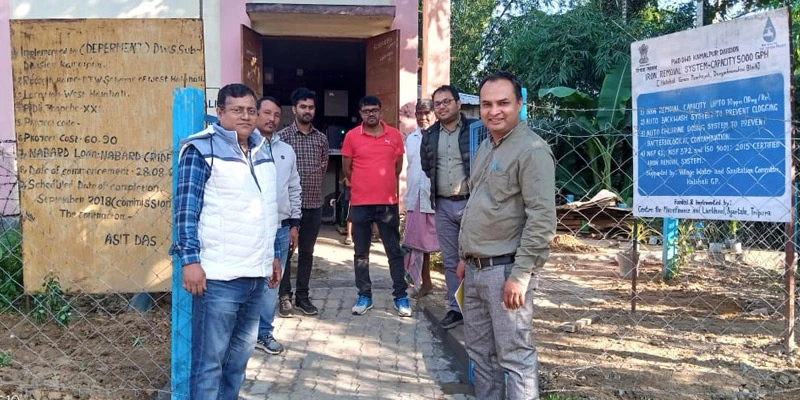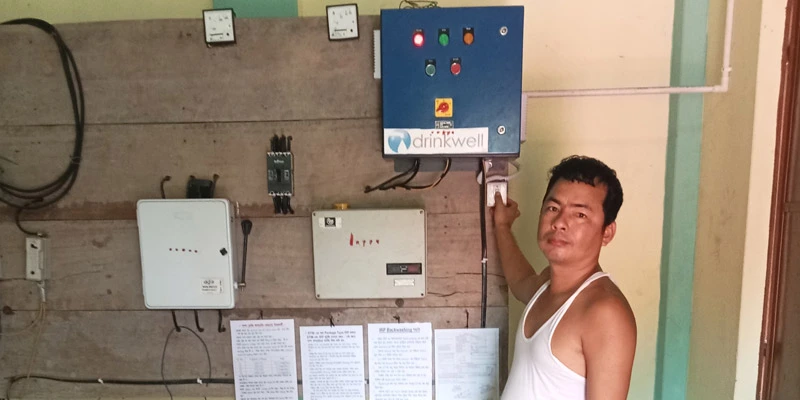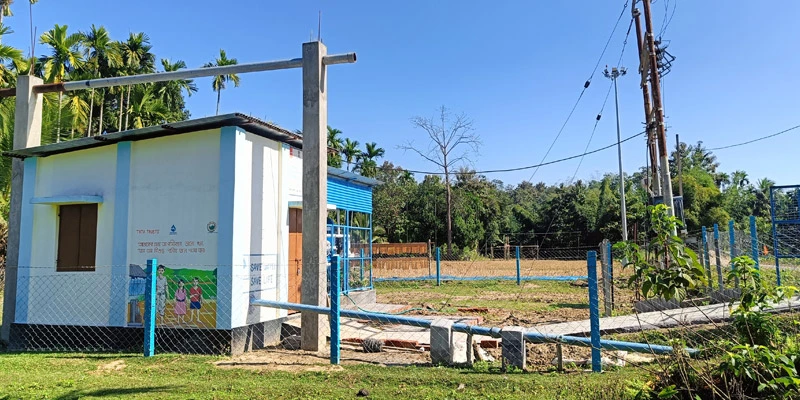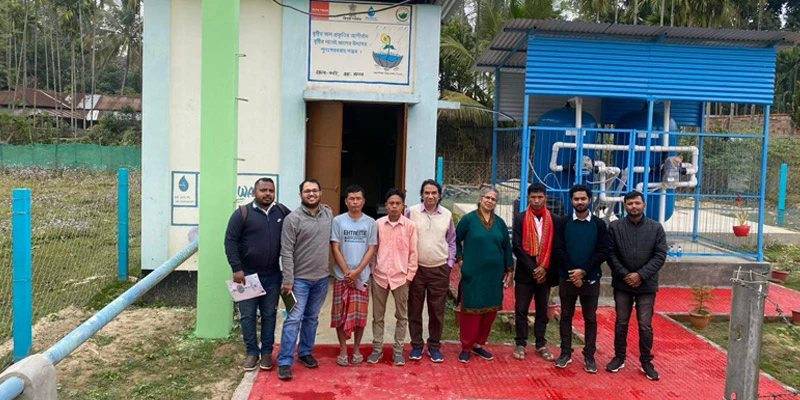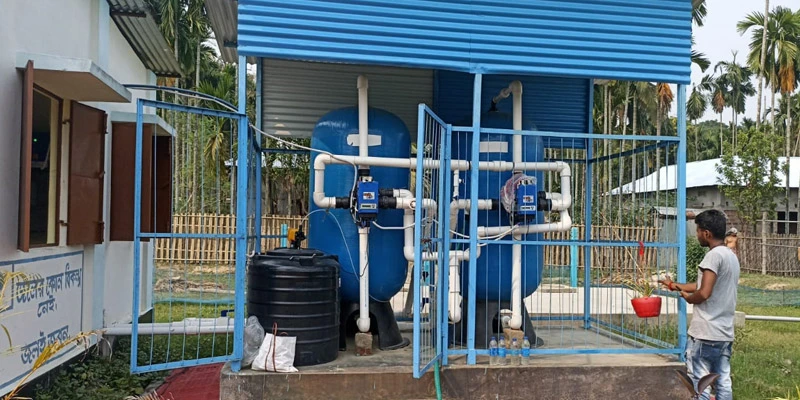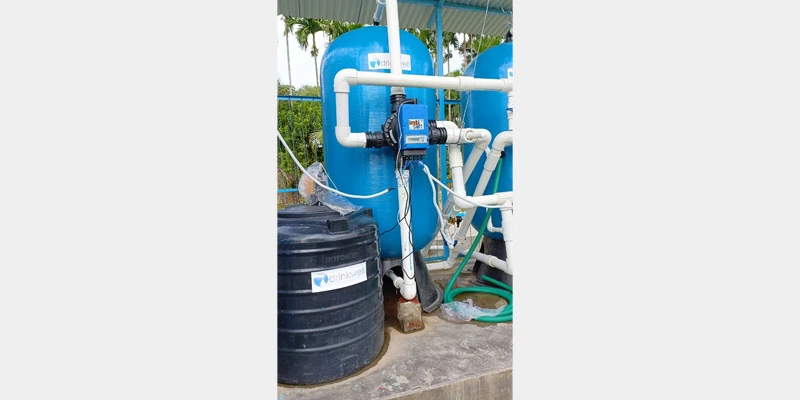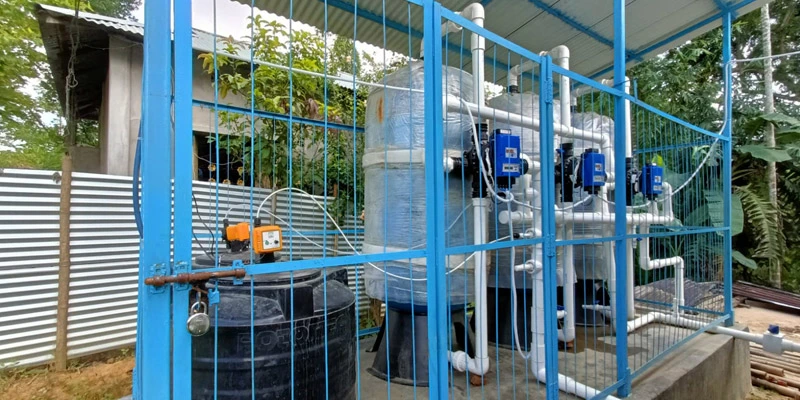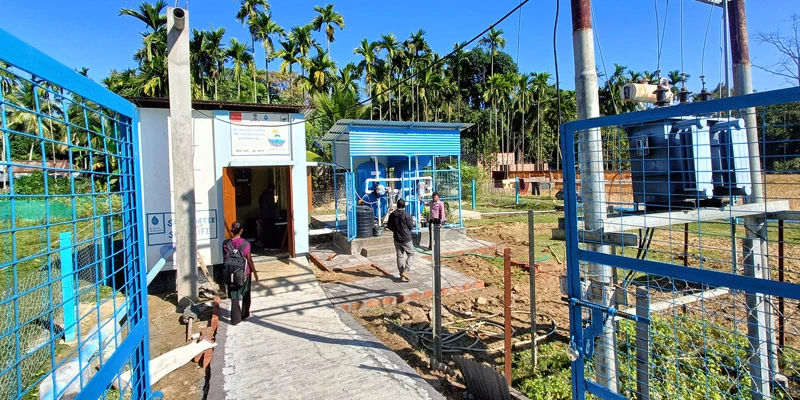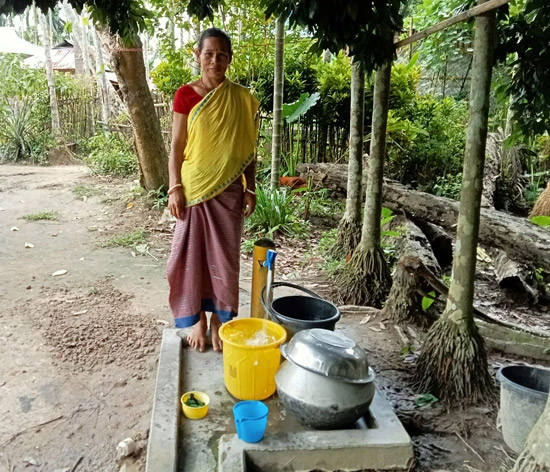
Mina Rani Debbarma, a resident of Biswarani Para in Ashapurna Roaja Para village in Tripura, vividly recalls how she and her fellow villagers once struggled to collect clean and uncontaminated water for their daily needs. "Before the Jal Jeevan Mission scheme and iron removal plant were installed, my mornings began with a long, exhausting walk to collect water from a distant stream. The water was often dirty, foul-smelling and full of iron, leaving me worried about my family's health," she recounts.
That’s why she could not contain her excitement when a community-led initiative by the Tata Trusts led to the inauguration of an iron removal plant in her village. "When we first drew water from it, I couldn't believe how clear and clean it was. It felt like a gift from the heavens," she recalls, her eyes sparkling with joy.
"Now, we have clean water that is safe to consume flowing into our homes. It has changed our lives completely.”
Like Mina, several villagers in Assam and Tripura are grappling with water security and contamination issues. To address this, the Tata Trusts’ Integrated Community-Managed Water Security and Quality Programme, implemented by Centre for Microfinance and Livelihood (CML), is seeking to build water sustainability through a host of spring-shed management, water quality surveillance, and treatment interventions. This includes setting up iron removal plants like the one at Biswarani Para.
Crucially, the Biswarani Para Iron Removal Plant’s success is rooted in strong community engagement from the start. CML first initiated a series of village-level meetings to understand the community's challenges with iron-contaminated water. These discussions sparked active participation from residents, particularly women and youth, in shaping the solution.
As a result, the Village Water and Sanitation Committee (VWSC) and Water Quality Monitoring Committee were reactivated and trained under the Jal Jeevan Mission programme. They played a key role in supporting awareness campaigns, and overseeing implementation. CML also conducted practical training sessions to equip local committee members and the pump operator with the skills needed to operate and maintain the system. This inclusive process fostered a strong sense of ownership, turning the community into active stakeholders rather than passive beneficiaries.
Mina’s story represents the positive change that community-managed water interventions can bring to underserved regions, improving health, reducing daily hardships and empowering communities.
